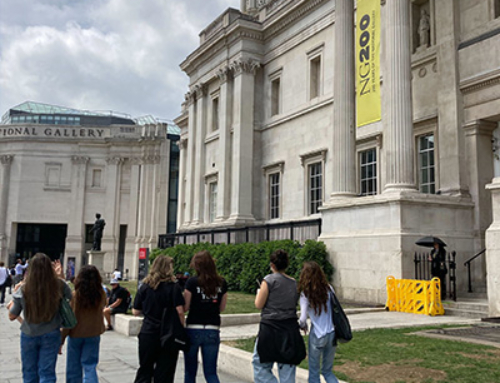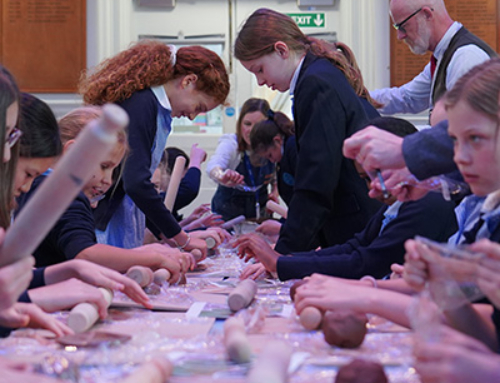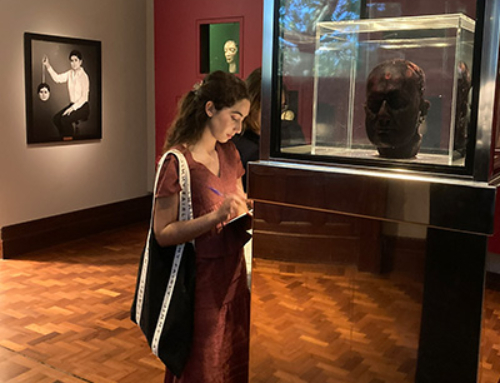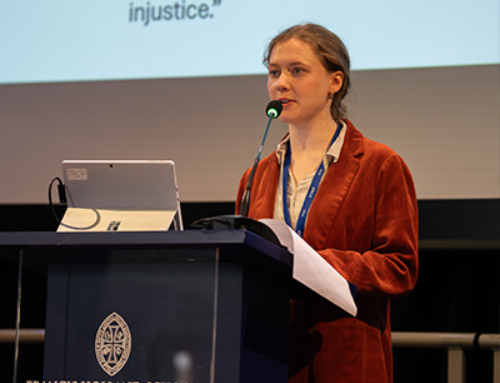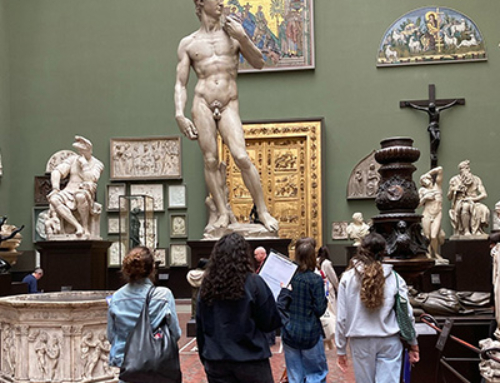“I chose this painting not only because its Good Friday but also because it makes me think of those who have todays vicious virus and the staff of the National Health who work tirelessly to give them relief.
Matthias Grünewald, 1512-16, Panels from The Isenheim Altarpiece, Unterlinden Museum, Colmar
Against a blackened sky, an over-life sized figure of Christ hangs from His cross in an image of utter despair: His head crowned with thorns falls limp, His arms are wrenched from their sockets, His hands begin to clench in pain, the wounds from His side and swollen feet drip blood and there is hardly an inch of His body that is not afflicted. To the right, St John the Baptist, who was not present at the crucifixion, stands isolated with a lamb, a prophecy of Christs sacrifice, pointing to his cousin with the words next to him in Latin He increases as I decrease. To the left, St John the Evangelist attempts to comfort the Virgin while an anguished St Mary Magdalene sinks to the ground unable to help Christ in His darkest hour.
The polyptych was painted for the High Altar of the hospital of a monastic complex dedicated to St Anthony at Isenheim, outside Colmar in France. The monks were devoted to looking after plague victims and those who had succumbed to an agonising skin disease known as St Anthonys Fire or ergotism. It is now known that ergot is a poisonous fungus that grows on rye flour that was used to make bread. The figure in the bottom left of the panel of The Temptation of St Anthony has a swollen belly, gangrenous skin and ulcerous sores that shows us the horror of the infliction. The sores of the victims of the plague or of ergotism are not unlike the wounds of Christ in The Crucifixion and sufferers could find solace in knowing that their Saviour understood their pain.
https://www.wikiart.org/en/matthias-grunewald/the-temptation-of-st-anthony-detail-1515
St Anthonys attribute is a little pig which he reportedly saved and pig fat may have been made into a balm that gave relief to patients. The monks gained a reputation for their care and their financial success resulted in a fine collection of paintings.
The altarpiece was only opened on religious feast days when the darkness of The Crucifixion gave way to glorious colour and, on the right, Christ bursts out of the tomb, not a scratch in sight, surrounded by a blinding light; the scene can be seen to represents both The Resurrection and The Ascension and give hope to the sick for eternal salvation.”



